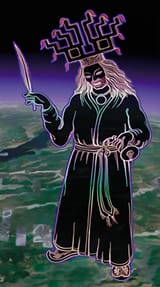Search Results
7/9/2025, 11:30:28 AM
>>509906271
https://www.boandbon.com/bon-and-indo-iranians/
>The question of Indo-Iranian influence on Bön has been open for a long time now. Seeking to explain some linguistic and cultural parallels, several scholars have brought forward different theories of how and when Bön could have been influenced by the Indo-Iranian culture and religion. These theories could be broadly summed up in four points:
>Bön (Yungdrung Bön) is a stream of Central Asian Buddhism adopted from India by the Iranian speaking regions in the West (such as Kushana Empire and so on) from where it reached the Tibetan Plateau prior to the introduction of Indian Buddhism per se from the South in the 8th century AD. This Central Asian Buddhism, traceable to Buddha Shakyamuni, mixed with the native culture and religion of the Tibetan Plateau producing what is now known as Yungdrung Bön. (Snellgrove, Tucci);
>Bön is a branch of Zoroastrianism or Mithraism and Tonpa Shenrab Miwo was a priest at the court of the Persian king Cyrus the Great of the Achaemenid dynasty. (Gumilev, Kuznetsov);
>Yungdrung Bön is a plagiarized form of Indian Buddhism which emerged after the 8th century AD and any Indo-Iranian – and especially Indian – influence was acquired in this process. (This is the view of many Tibetan Buddhist scholars and some Western scholars who still follow this outdated and flimsy theory);
>Yungdrung Bön is the original, authentic Central Asian Buddhism taught by the Buddha Tonpa Shenrab Miwo who was born in 16,017 BC (according to tradition) in the Central Asian region of Tagzig (modern-day Tajikistan and surrounding Central Asian states). Tonpa Shenrab Miwo brought Yungdrung Bön teachings to the Zhang Zhung Confederation (tribal union of 18 tribes) and Tibet (at that time only U and Tsang provinces) himself, and that is the source of most Indo-Iranian linguistic and cultural traces found in Tibetan Bön. (This is the traditional Bönpo view)
https://www.boandbon.com/bon-and-indo-iranians/
>The question of Indo-Iranian influence on Bön has been open for a long time now. Seeking to explain some linguistic and cultural parallels, several scholars have brought forward different theories of how and when Bön could have been influenced by the Indo-Iranian culture and religion. These theories could be broadly summed up in four points:
>Bön (Yungdrung Bön) is a stream of Central Asian Buddhism adopted from India by the Iranian speaking regions in the West (such as Kushana Empire and so on) from where it reached the Tibetan Plateau prior to the introduction of Indian Buddhism per se from the South in the 8th century AD. This Central Asian Buddhism, traceable to Buddha Shakyamuni, mixed with the native culture and religion of the Tibetan Plateau producing what is now known as Yungdrung Bön. (Snellgrove, Tucci);
>Bön is a branch of Zoroastrianism or Mithraism and Tonpa Shenrab Miwo was a priest at the court of the Persian king Cyrus the Great of the Achaemenid dynasty. (Gumilev, Kuznetsov);
>Yungdrung Bön is a plagiarized form of Indian Buddhism which emerged after the 8th century AD and any Indo-Iranian – and especially Indian – influence was acquired in this process. (This is the view of many Tibetan Buddhist scholars and some Western scholars who still follow this outdated and flimsy theory);
>Yungdrung Bön is the original, authentic Central Asian Buddhism taught by the Buddha Tonpa Shenrab Miwo who was born in 16,017 BC (according to tradition) in the Central Asian region of Tagzig (modern-day Tajikistan and surrounding Central Asian states). Tonpa Shenrab Miwo brought Yungdrung Bön teachings to the Zhang Zhung Confederation (tribal union of 18 tribes) and Tibet (at that time only U and Tsang provinces) himself, and that is the source of most Indo-Iranian linguistic and cultural traces found in Tibetan Bön. (This is the traditional Bönpo view)
Page 1
